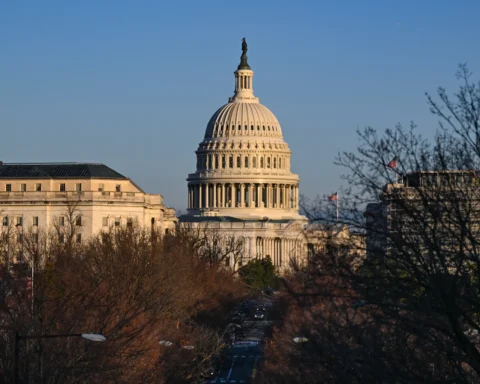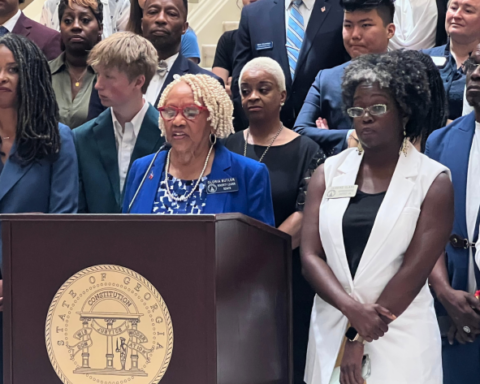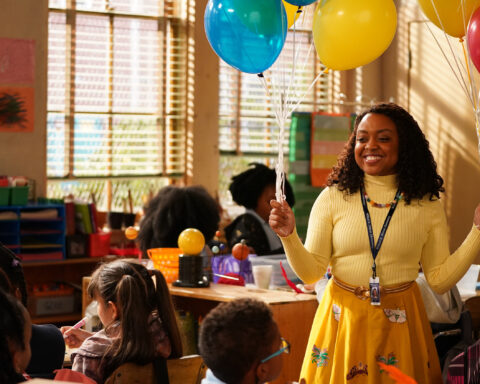Some teachers are grappling with how to protect students and themselves against the coronavirus in light of new guidelines for returning to in-person classes issued by the US Centers for Disease Control and Prevention.
Friday’s announcement relaxes recommendations for social distancing to 3 feet from 6 feet and relies heavily on schools using other measures, including universal masking and contact tracing, CDC Director Dr. Rochelle Walensky said.
The guidance will be challenging, said Becky Pringle, president of the National Education Association.
“At first glance, the change to three-feet distance for students in classrooms will be particularly challenging for large urban school districts and those that have not yet had access to the resources necessary to fully implement the very COVID-19 mitigation measures that the CDC says are essential to safe in-person instruction, no matter how far apart students in classrooms are,” she said.
Many officials and parents have been eager to send students back to classes after a year of learning impacted by a global pandemic. And while the increase in vaccinations has made people optimistic that a return to a sense of normalcy is near, health experts worry that variants could cause another surge.
And students under 16 years old are unlikely to be eligible for vaccines for several more months.
“We are so close to being able to ensure that all our schools can be so much safer,” Pringle said. “But as public health officials have rightly cautioned, in the face of new variants and a race to make vaccinations widely available, this is not the time to let down our guard.”
With 80% of schools now offering some kind of in-person instruction, according to the American Federation of Teachers, there has been progress in re-opening classes — and with more widespread vaccine availability that number should increase.
The AFT said Friday it will “reserve judgment” on the change in guidelines until more information is available, but also expressed concern that the motivation might have been to accommodate schools without the space for six-feet distancing rather than science-backed safety.
Low transmission in schools
The CDC said experts were persuaded to lower distancing because of the low levels of in-school transmission in three states.
The center published reports from Utah, Missouri and Florida on Friday that showed if students wore masks and followed other measures to reduce transmission, the 6 feet of distance didn’t matter so much.
In Florida, 60% of Covid-19 cases among students were not school related, a team of CDC and Florida Department of Health researchers reported. Sporting and social events were more dangerous than classrooms, they said.
In Utah, a study found that 86% of students wore masks in elementary school classrooms and very few passed the virus to others.
“Despite high community incidence and an inability to space students’ classroom seats 6 feet or more apart, this investigation found low SARS-CoV-2 transmission and no school-related outbreaks in 20 Salt Lake County elementary schools with high student mask use and implementation of multiple strategies to limit transmission,” researchers wrote.
And in Missouri, where only 27% of schools were able to space desks 6 feet apart, a two-week-long investigation found only two people infected anyone else at school, and in both cases it was only one other person.
Barriers to normal
Meanwhile, experts say two barriers stand in the way of reaching herd immunity — the variants and vaccine hesitancy.
“We’re seeing restrictions being lifted in so many parts of the country, we’re seeing travel at an all-time high. People are already going back to pre-pandemic normal,” emergency physician Dr. Leana Wen told CNN’s Anderson Cooper on Thursday.
“We have a pretty narrow window of opportunity to make clear what the benefits of vaccinations are. We know that these vaccines are really effective at preventing severe disease. They also do substantially reduce your risk in each of these different types of settings, whether it’s going to the restaurant or gym, or seeing family and friends.”
Nearly 24% of the US population — 79 million people — have received at least one dose of vaccine, according to the Centers for Disease Control and Prevention. Among Americans 65 and older, more than 67% of the population have received at least one dose.
At least 121 million doses of Covid-19 vaccine have been administered in the US, according to CDC data reported Saturday, and 100 million of those have been reported during President Joe Biden’s time in office.
On Friday, Biden doubled his previous target, announcing a goal to have 200 million doses administered by his 100th day in office.
New variant is likely more deadly, Fauci says
Quick vaccination is more important than ever because the B.1.1.7 variant, first discovered in the United Kingdom, is projected to become the dominant variant by the end of March or early April, according to the CDC.
Research from earlier in the year suggests that vaccination can still provide protection against new variants.
Measure like mask use and social distancing are also crucial, Dr. Anthony Fauci said during a White House briefing, as the variant is both more contagious and likely more deadly.
The B.1.1.7 variant has since been identified in 50 US jurisdictions and “now likely accounts now for about 20 to 30% of the infections in this country. And that number is growing,” Fauci said.
The variant is about 50% more transmissible than the original virus, according to UK documentation, Fauci said.
Because of the complications provided by variants, experts say mass inoculation is necessary.







